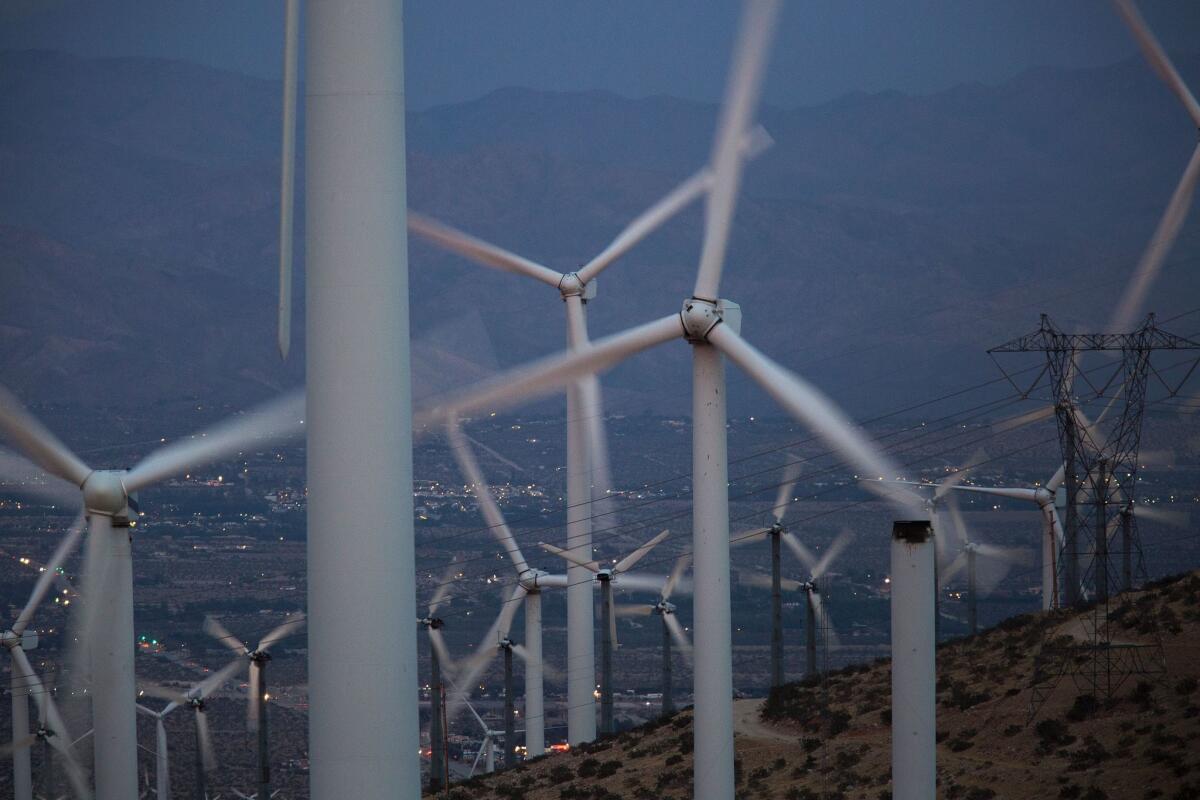Brown wants to resurrect a plan to expand the state’s power grid, but some say it’s not that simple

In the name of clean energy, Gov. Jerry Brown has proposed resurrecting a plan from nearly two decades ago to expand California’s electricity grid — a strategy that was part of efforts to deregulate the state’s utility industry.
Calls to curb pollution and thwart climate change have breathed new life into a concept that was part of Senate Bill 96, passed in 1999 that, among other things, sought to expand the western grid by tying California’s electric system more intricately to its western neighbors.
San Diego lawyer Michael Aguirre, a former assistant U.S. attorney and San Diego city attorney, argues that the latest effort to integrate more of California’s electric operations with Wyoming, Utah, Idaho and other states isn’t so much about spreading the clean energy gospel but returning the state to the era of manipulated energy markets that led to the 2000-2001 energy crisis.
“This is an old idea, and it has nothing to do with renewables,” Aguirre said.
Aguirre plans to present his findings during the latest discussion of the western grid expansion at a workshop Thursday at the California Energy Commission in Sacramento.
In April 2015, the California Independent System Operator and the investor-owned utility PacifiCorp announced they had entered into a memorandum of understanding to explore the feasibility, costs and benefits of PacifiCorp joining the nonprofit as a participating transmission owner.
Cal-ISO, which has a board appointed by the governor and approved by the Senate, manages the long-distance transmission of most of the state’s electricity.
Brown’s office referred questions to the Energy Commission. Chairman Robert Weisenmiller defended the plan, saying that a regional approach to electricity would be more efficient and cost effective.
“Obviously, the driver is always saving money,” he said. “The economics are pretty compelling without renewables but much more compelling with renewables.”
In a February letter to Brown, state legislative leaders questioned the proposal to expand the electric grid and add PacifiCorp into a regional energy market with Cal-ISO. PacifiCorp is one of the largest users of coal-fired power plants in the West.
The letter raised concerns about the proposal hindering efforts to meet the state’s new mandate that 50% of the electricity supplied to Californians come from clean sources such as solar and wind energy. In addition, Senate leader Kevin de León and Assembly Speaker Anthony Rendon said they did not want California to lose authority to regulate the utility industry.
“The proposed regionalization must not undermine state sovereignty or cede authority of our state’s cutting edge clean energy and climate policies to others who do not have the same strong commitment and legal framework to reduce climate pollution and promote clean energy,” the letter stated.
Supporters of grid expansion say that a more regional approach to electricity will help manage the variable nature of solar and wind.
For instance, when the wind is blowing in Wyoming, electricity generated by windmills there can be sent to California at times when there is little or no wind blowing in the Golden State. Otherwise, wind and solar plants might generate more electricity than is needed at a particular time with nowhere to send it.
The 1999 proposal to expand the western grid died after the failed efforts at deregulation led to manipulation of the California energy markets, a jump in electricity prices and rolling blackouts.
Bill Corcoran, a Western director of the Sierra Club, said that although the creation of Cal-ISO contemplated expansion of the western grid, and the expansion could present some benefits, the partnership with PacifiCorp is troublesome.
“The problem at the center of the issue is a very dirty utility that would be linked with the California grid,” Corcoran said.
Aguirre goes further. He said the partnership with PacifiCorp contradicts the goal of making better use of renewables and raises questions about its real intent.
“This is just another power move” by the utility industry, Aguirre said. “This idea didn’t come out of renewables. It came out of deregulation efforts.”
ALSO
Vigil for drowned teens ends with four shot in downtown Oakland
L.A. education reform group names board, signals shift from charter-school-only focus
Prosecutors remove judge in Stanford swimmer sex assault case from new sex crimes case
Follow me at @ivanlpenn
More to Read
Inside the business of entertainment
The Wide Shot brings you news, analysis and insights on everything from streaming wars to production — and what it all means for the future.
You may occasionally receive promotional content from the Los Angeles Times.











